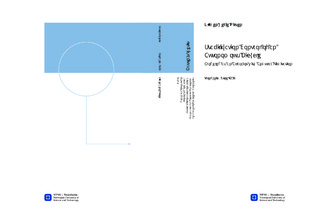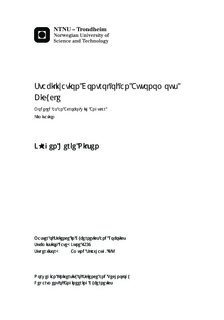| dc.description.abstract | With an inverted pendulum mounted on the bicycle frame, the system is corresponding to a bicyclist who applies balancing torque from the hip. This thesis present a mathematical system model of the autonomous bicycle, modeled as an inverted double pendulum with actuation at the joint connecting the two system links, better known as an Acrobot. The Acrobot is a well-known underactuated robot manipulator, which implies that only the mounted inverted pendulum can obtain instantaneous acceleration in arbitrary direction by use of the system actuator. The goal is to stabilize the autonomous bicycle around the upright unstable equilibrium by use of the control torque applied from the DC motor mounted to the bicycle frame and the inverted pendulum. With this single control torque, the underactuated system introduces a challenging control-problem. By use of the system model in the authors own work(Project thesis, 2013), angular limitation of the bicycle tilt angle and the inverted pendulum angle are included into the derived Acrobot model, to get a complete mathematical model equivalent to the real life bicycle system. As the goal is to develop a stabilization controller, the thesis further investigates the most convincing controllers presented in (Project thesis, 2013) - Lai et al. (article,2005) and Kobayashi et al. (article,2002). These articles suggests to defined controller subspaces by dividing the system control into balance and swing-up control. The balance controller is designed by use of system linearization around the upright unstable equilibrium, where the linear system matrices are used to create an LQR balance controller for optimal state feedback control by pole placement. The suggested controllers utilizes nonlinear energy based controllers for system swing-up. As the controller-designs increases system energy by use of the bicycle outside of the angular limitations, the resulting swing-up control is unable to move the system states within the balance subspace. Thereby the controller implementations are verified as unsuccessful stabilization controllers for the bicycle system, through simulation. Further on a new controller strategy is investigated, where the partially feedback linearization is utilized to cancel out the nonlinearities of the actuated system angle. By dividing the stabilization controller into balance and swing-up control, the partially feedback linearized system representation is utilized to design linear PD-controller for system swing-up. A new LQR controller was designed by linearization around the upright equilibrium of the partially feedback linearized system. Through simulation the swing-up PD-controller is tuned and tested to achieve the desired system functionality by utilization of the inverted pendulum and counteracting torque onto the bicycle. With torque disturbance applied onto the bicycle, the stabilization controller functionality is tested and analyzed. The complete controller-design is verified to successfully stabilize the bicycle, from initial positions at the limit, at its upright position by use of an LQR balance controller and swing-up PD-controller. Without exceeding the maximum torque able to apply from the system actuator, the complete controller satisfies the requirements of the autonomous bicycle stabilization. | nb_NO |

